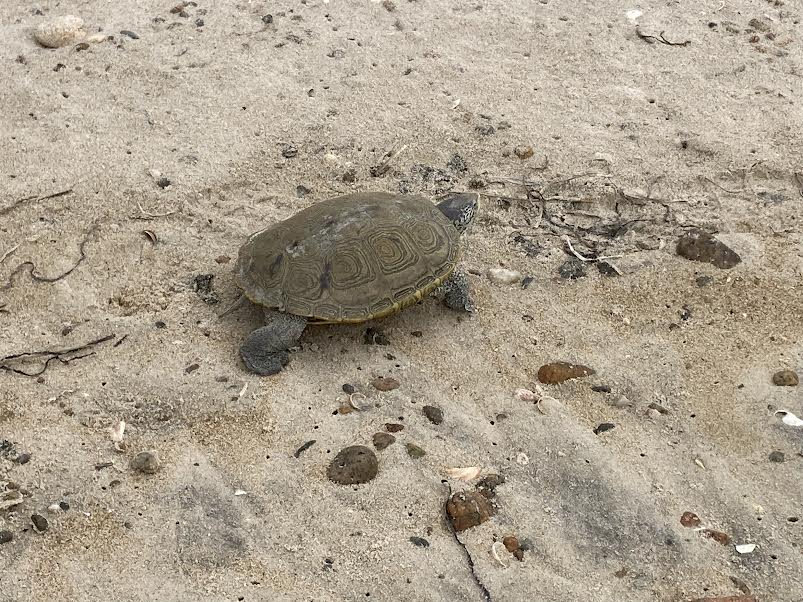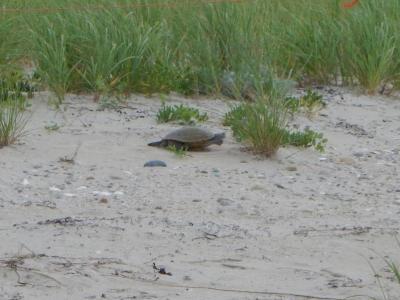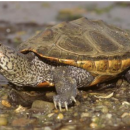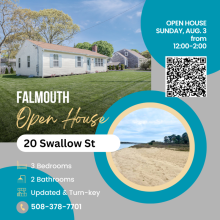Volunteers strive to make diamond-backed terrapin population shine
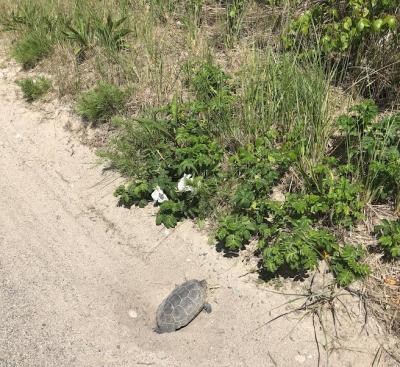

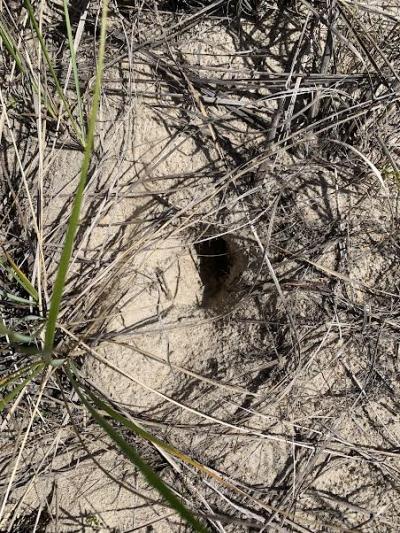
With slow, steady determination, volunteers at Allens Pond Wildlife Sanctuary are making strides to bolster the population of northern diamond-backed terrapins, a salt marsh turtle listed as a threatened species in the state.
Equipped with binoculars, wind speed meters and range finders, the nature enthusiasts scoured the property to find signs of the terrapins.
This pilot project, which took place in June and July, resulted in volunteers locating 10 terrapins in the water, six on land and four nests, although all had been destroyed by predators, possibly raccoons or foxes, said Macie Broussard, property manager at the location who is overseeing the pilot study.
This information will help staff members determine the best course of action to support the population in years ahead, she said.
“I’m really excited about having this information, knowing how they’re using our property,’’ Broussard added.
Allens Pond is an appealing area for the terrapins because they require brackish water, a combination of fresh and salt water commonly found at the Mass Audubon property, she said. The northern diamond-backed terrapins are the only brackish water turtle species in the state, according to the Massachusetts Division of Fisheries and Wildlife.
They can be found in mud flats, shallow bays, coves and tidal estuaries, according to Mass Wildlife. The turtles build nests on adjacent sandy, dry areas.
They are most closely associated with Cape Cod — and there “a lot’’ there, Broussard said — but the area roughly from Dartmouth to Wareham also serves as home to the turtles.
In previous years, terrapins have been seen on the property, but the turtles were not monitored in an standardized way.
That changed when Broussard was brought on this year as a property manager for the site, where her work includes creating and overseeing the pilot study.
Broussard, a native of Louisiana, graduated from Louisiana State University where she earned a degree in natural resource ecology and management with a concentration on wildlife ecology.
Initially interested in waterfowl, she spent a season at Cape Romain National Wildlife Refuge in South Carolina and had “the best summer of my life.’’ The refuge is home to one of the largest nesting populations of loggerhead sea turtles.
Broussard became hooked on working with turtles.
She used her experience to train the Allens Pond volunteers to identify terrapin heads bobbing out of the water and how to keep an accurate count without listing the same reptile twice.
The volunteers also searched for signs of them on land. They looked for signs such as tracks that led to and from the water and active or abandoned nests.
Among the reasons the species is threatened, according to Mass Wildlife, is the reduction of salt marsh habitat, loss of sandy nesting areas and destruction of dune areas.
The findings provided by the volunteers represent the first step in a long-term effort to make conditions more amenable to the terrapins, Broussard said.
The observations will help determine potential mitigation efforts, such as salt marsh restoration, that can strengthen their numbers.
Over the winter, she will help develop next year’s study plans. The exact next steps are not yet known but the goal remains, she said, “to grow knowledge about terrapins in the area.’’
Specifics have not yet been established for next year’s volunteer schedule, but anyone interested can email at sevols@massaudubon.org.



